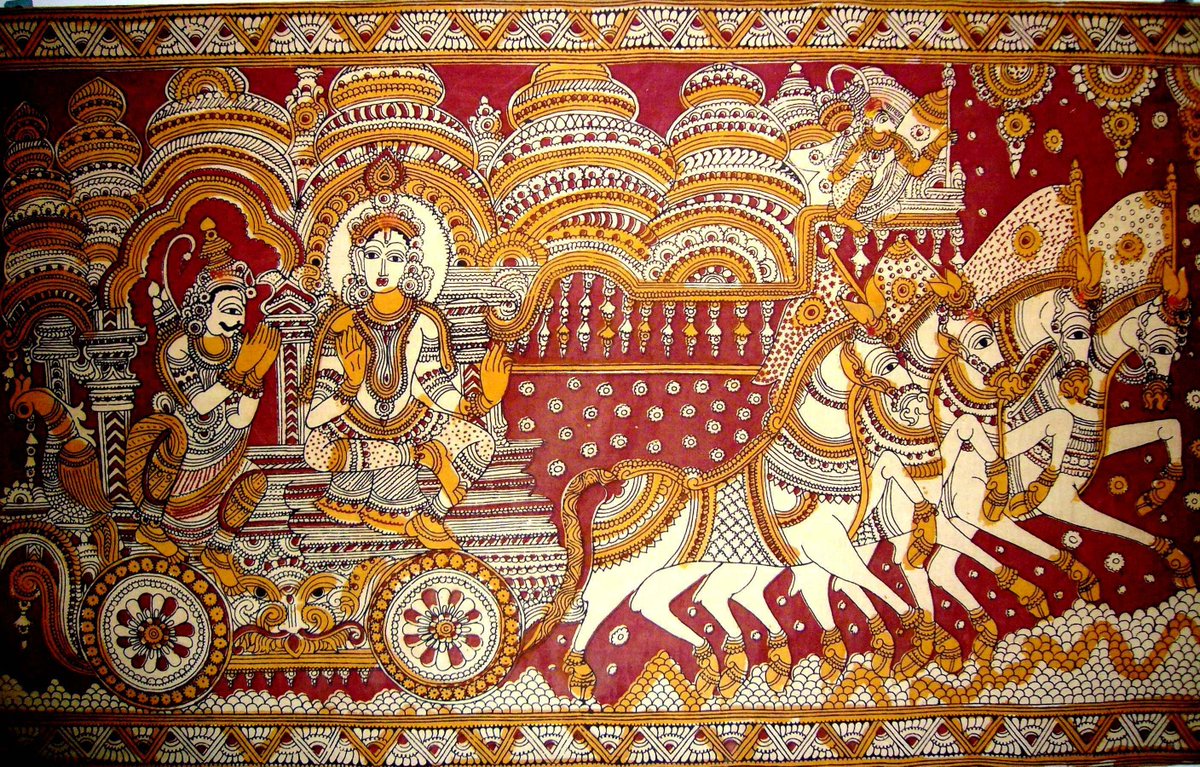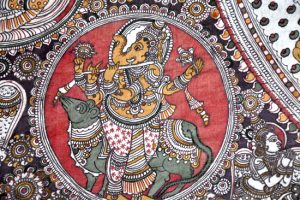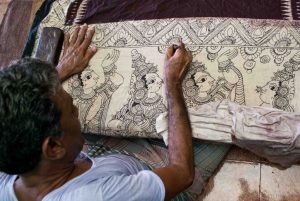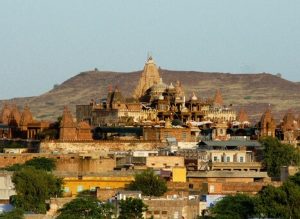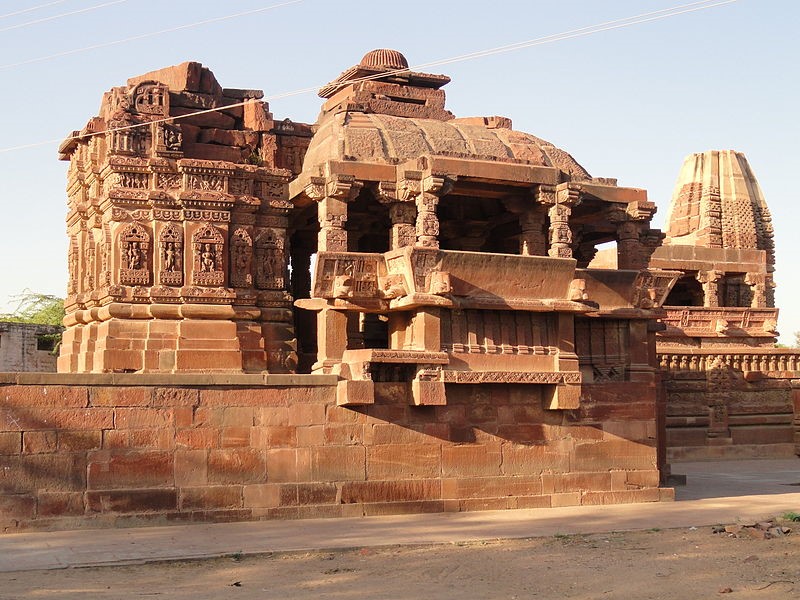(Image Courtesy:Twitter@IndianDiplomacy)
Are you looking for Srikalahasti Kalamkari then check out this post to know more. Kalamkari is an ethereal ancient craft of hand painting on a fabric. ‘Kalam’ means pen and ‘kari’ means work. There are two types of Kalamkari: – the Srikalahasti style and the Machilipatnam style.
The Srikalahasti Kalamkari style involves the depiction of scenes from Indian epics like Mahabharata and Ramayana and other mythological stories. Srikalahasti is a holy town in Chittoor district of Andhra Pradesh and over the years has emerged as the epicenter of Kalamkari work in Andhra Pradesh. Srikalahasti got its name from followers of Lord Shiva namely the Sri(spider), Kala(snake) and Hasti(Elephant).The main reason for the art to flourish in Srikalahasti is the river Swarnamukhi and its clean water. In today’s times, Kalamkari art is mainly used to create Kalamkari sarees.
Srikalahasti Kalamkari
(Image Courtesy:FashionBuzzer.com)
One of the distinctive features of this craft are the colours used in the painting. Only sober colours obtained from natural sources are used as dyes for the painting. The black colour is obtained by mixing jaggery, water and iron fillings. Blue, Red, and mustard or yellow is derived from Indigo leaves, Alum and boiled pomegranate peels respectively and the golden color is taken from the Myrobalan flower.
(Image Courtesy:Pushkarv.org)
The Kalamkari artwork is generally done on cotton, jute, and silk.The standard procedure involved in the Kalamkari paintings on a cloth is as follows:
a) The cloth is washed and dried to remove starch and dirt.
b) Powder made from Myrobalan is mixed with milk. The dried cloth is soaked in it for a couple of hours.
c) The cloth is dried and made paint ready.
d) A tamarind stick is used to draw the outlines on the cloth and later a Kalamkari pen made up of bamboo stick, cotton and sponge acts as a brush to paint.
(Image Courtesy:Strandofsilk.com)
e) The outlines and their backgrounds are painted black and red respectively .
f) The colours are left to dry for a day and then the cloth is washed in river water to remove excess colours.
g) The cloth is red dyed fully by putting it in a boiling pot containing the red colour solution.
h) To spread the colour evenly, the cloth is laid out on the river sand, sprinkled with water and bleached in the sunlight.
i) The cloth is further soaked in milk to retain colour evenly. The milk fat acts as wax and prevents spreading of colours.
j) Finally, the cloth is painted Golden and Blue in the left over areas, washed and dried.
(Image Courtesy:Strandofsilk.com)
Today around 300 individuals in and around Srikalahasti are involved in Kalamkari work. In spite of doing such an artful job, the craftsmen earn only 1500 to 7000 rs per month. Since Kalamkari technique is so peculiar in nature and involves a series of steps, it is losing out in competition to the mechanized loom industry. However fashion designers like Gaurang Shah are doing good work by showcasing Kalamkari work on the ramp and hopefully in near future, the Kalamkari work will get its share of popularity and price

